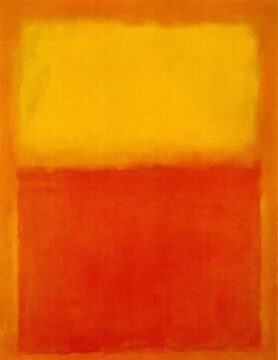Adam Greenhalgh at Literary Hub:
 In the summer of 1933, Mark Rothko, who was then still known as Markus Rothkowitz, hitchhiked nearly three thousand miles from New York City to his hometown of Portland, Oregon. He had done this several times in recent years, having moved east in 1921 to attend Yale University before withdrawing and settling in New York in 1923.
In the summer of 1933, Mark Rothko, who was then still known as Markus Rothkowitz, hitchhiked nearly three thousand miles from New York City to his hometown of Portland, Oregon. He had done this several times in recent years, having moved east in 1921 to attend Yale University before withdrawing and settling in New York in 1923.
But 1933 was different for two reasons. First, he was accompanied by his wife, Edith Sachar. They had married the previous November, and the ostensible purpose of the trip was to introduce Edith to Rothko’s mother. Second, Rothko had his first solo exhibition, at the Museum of Art, Portland, in July and August. So the trip marked both a personal and a professional milestone for the aspiring artist.
Rothko’s Portland relatives were unable to host the newlyweds, so they set up camp in the hills overlooking the city. According to Rothko’s brother Moise (later known as Maurice Roth), “with canvas or whatever they had, they built themselves a hut there and lived with no facilities of any kind.” Canvas was suitable for a tent in the woods, but for painting outdoors Rothko favored paper. Lightweight and portable, paper was a logical choice for a peripatetic summer.
More here.
